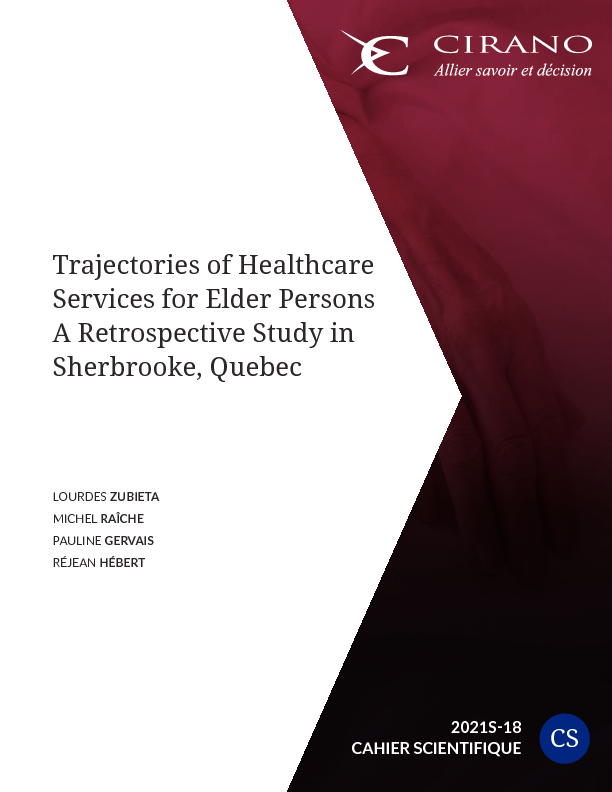Trajectories of Healthcare Services for Elder Persons - A Retrospective Study in Sherbrooke, Quebec
This is a longitudinal study using health administrative data of a cohort of 65+ adults, living in the city of Sherbrooke, Quebec, Canada from Jan 2011 to Dec 2015. We merged five databases including all individual visits to emergency room (ER), hospitalisations (CH), geriatric wards, admissions to intermediate and long term care (IC, LTC) facilities, and home care (HC) services. The objectives of this study were: 1) to provide a 5-year portrait of the use of health services of the 65+ population in the city of Sherbrooke, Quebec, 2) to identify the most common trajectories followed by elder patients over five years, and 3) to gather evidence on the relationship between the intensity of HC and further ER visits and hospitalisations. The cohort of services’ users represents 59% of Sherbrooke’s 65+ population. The most frequent trajectory found was ER and CH, which speaks of a health care system hospital - centered. The majority of deaths occurred during a hospital stay (CH, ~55%) or in a long-term care facility (LTC, ~28%). We also found 1 652 (8.4%) admissions to LTC facilities, with 43% of them coming straight from a hospital for an average of one month before LTC admission. Individuals having received at least one home care visit represent 34% of the original cohort and generated 52% of services excluding home care. Data visualisation diagrams indicate that earlier HC visits were followed by less ER visits and even less hospitalisations, when compared with users receiving HC later on our study interval. Finally, we found an important reduction of home care services, mainly for those users with high intensity of services; this fact underlines the system’s inability to refocus health care services on home care.




